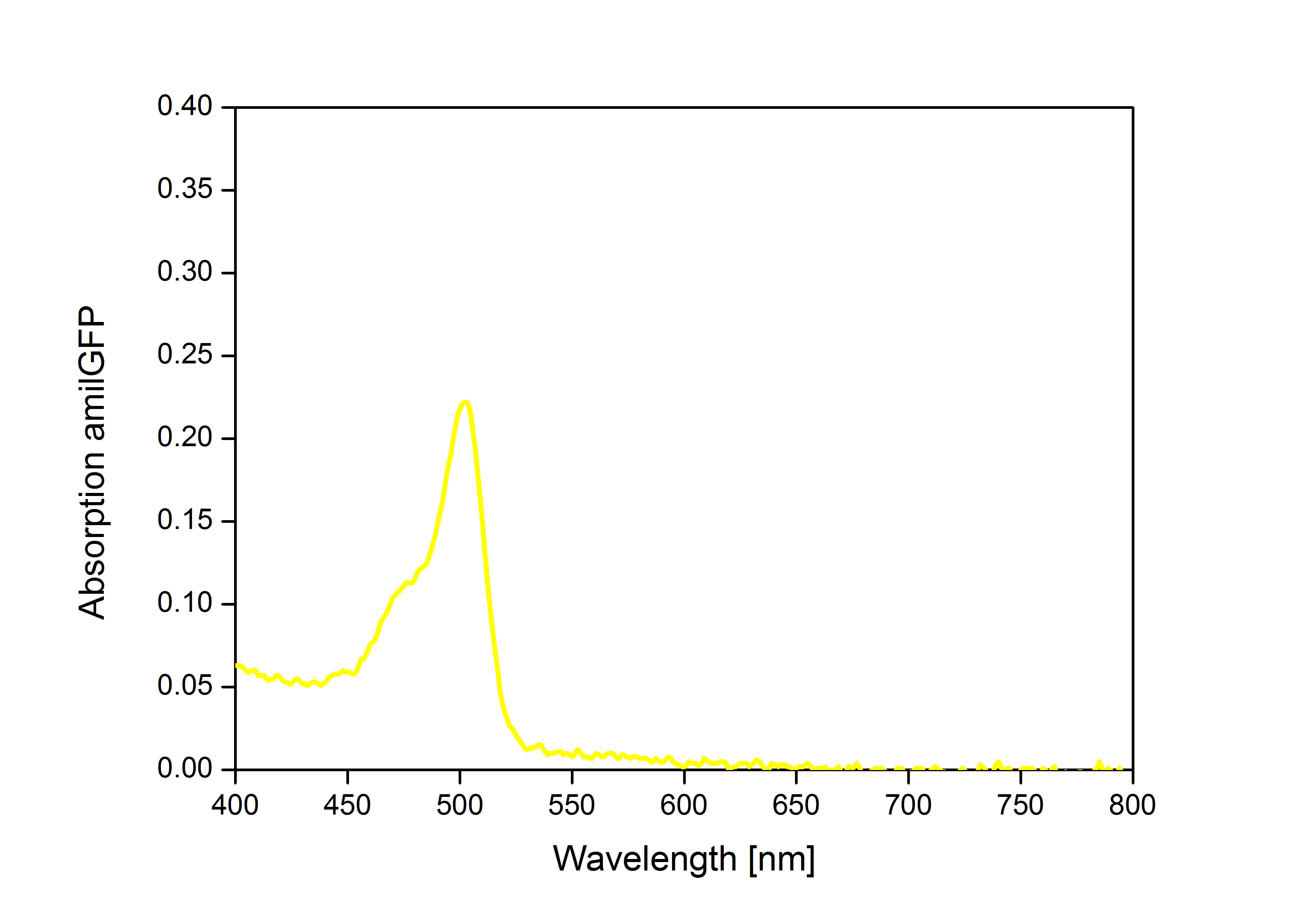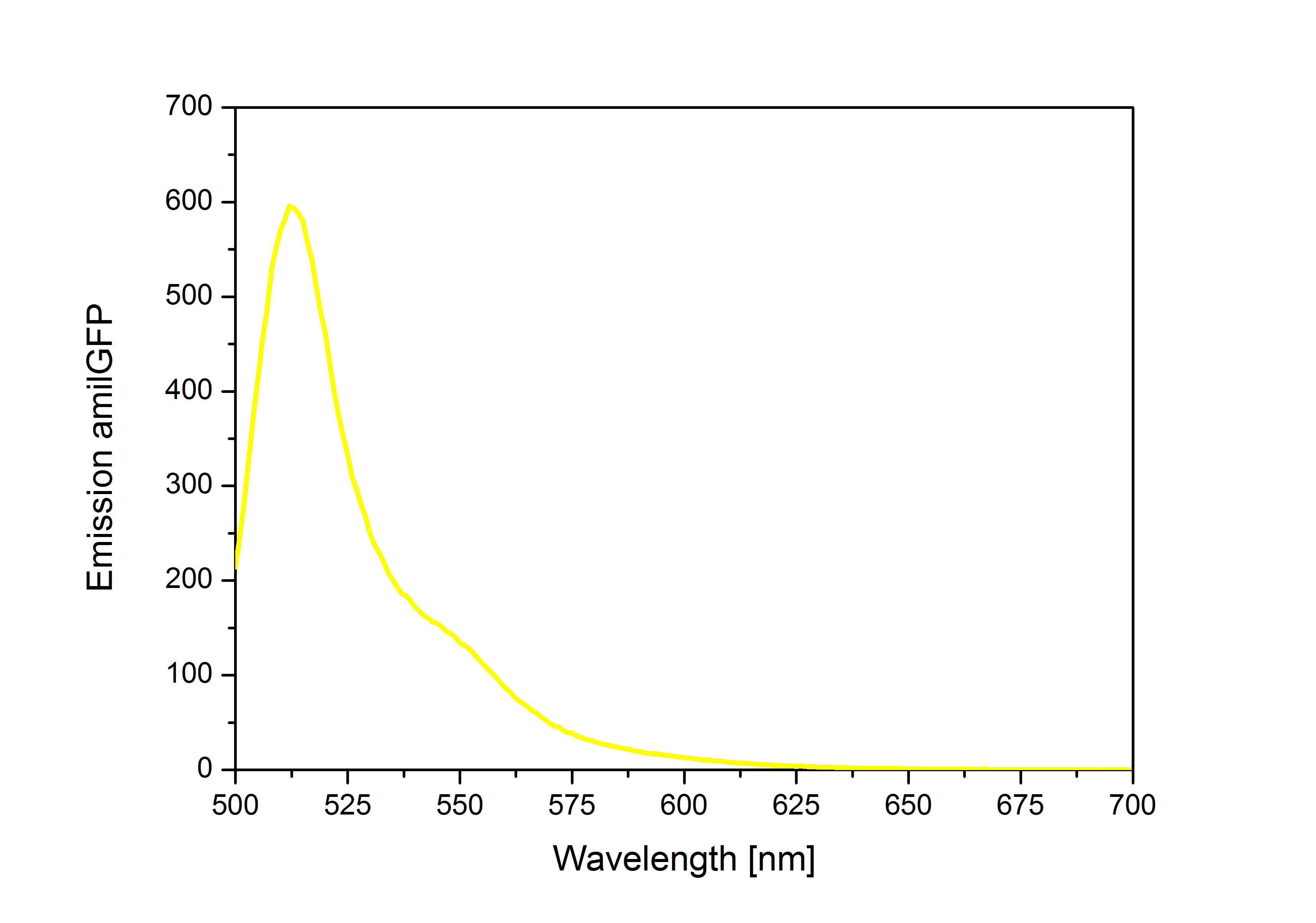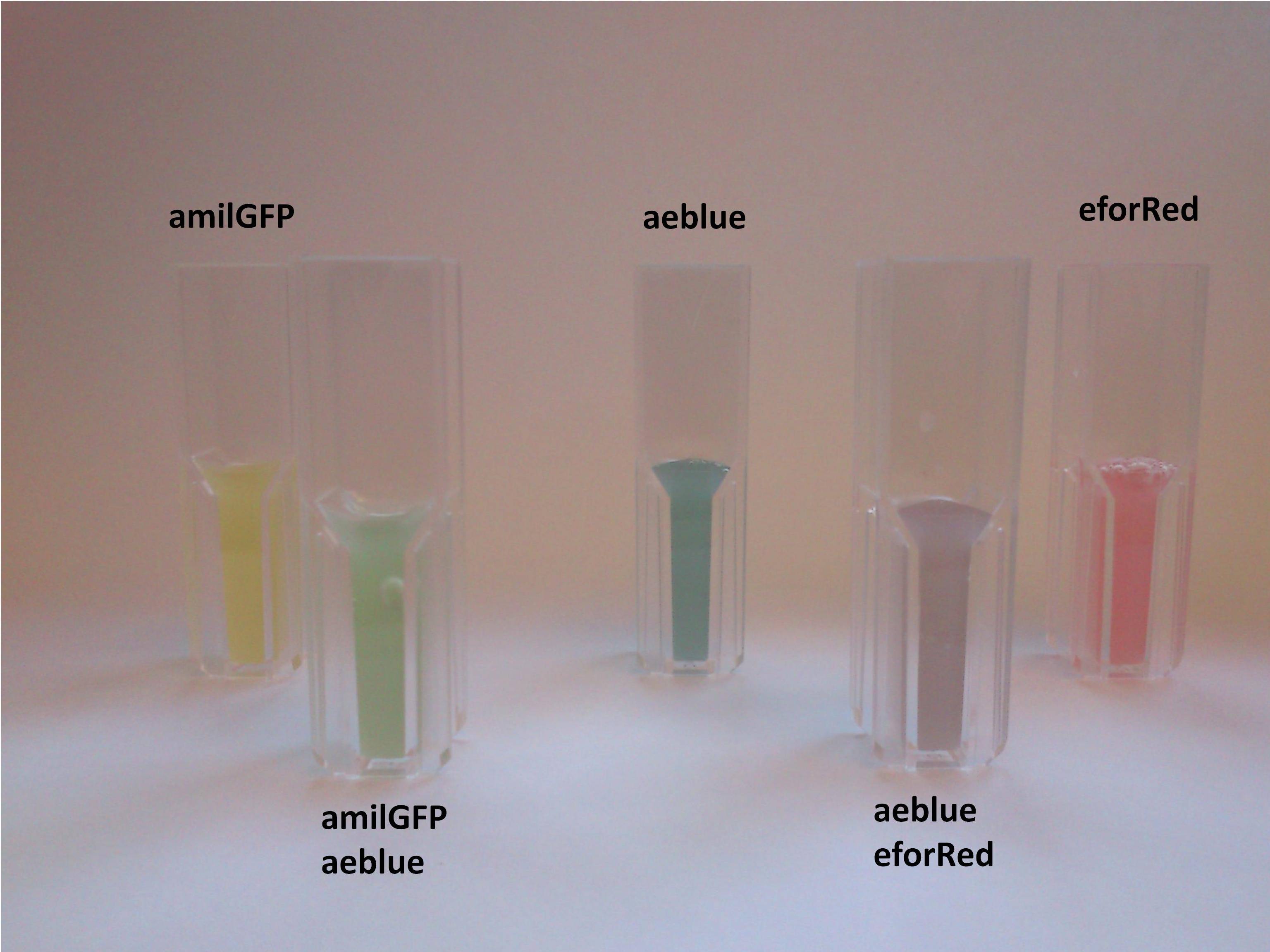Part:BBa_K1073024:Experience
This experience page is provided so that any user may enter their experience using this part.
Please enter
how you used this part and how it worked out.
Applications of BBa_K1073024
When amilGFP is expressed, the colonies on plates as well as the liquid culture become yellow.
User Reviews
UNIQfc870a50b14bef2f-partinfo-00000000-QINU
|
•••••
iGEM Team Braunschweig 2013 |
When expressed the chromoprotein amilGFP exhibits a strong yellow color. In order to avoid absorption by the chomoproteins during the measurement of the OD of bacterial cultures, the absorption and emission spectra were measured and an optimal wavelength for spectral optical density measurement was determined to be at 520nm. iGEM Team Braunschweig 2013: Absorption spectrum of chromoprotein amilGFP in the wavelength range 400-800 nm. Absorption maximum of amilGFP: 504 nm iGEM Team Braunschweig 2013: Emission spectrum of chromoprotein amilGFP. This chromoprotein does show significant emission that can be detected by different optical devices with the appropriate filters. Emission maximum of amilGFP: 515,8 nm
iGEM Team Braunschweig 2013: Culture broth of E.coli XL1 Blue MRF' expressing different chromoproteins in monoculture and mixed.
|
UNIQfc870a50b14bef2f-partinfo-00000004-QINU



